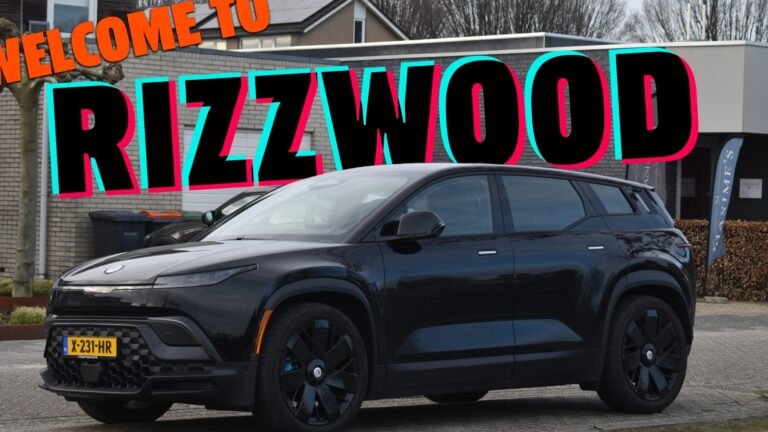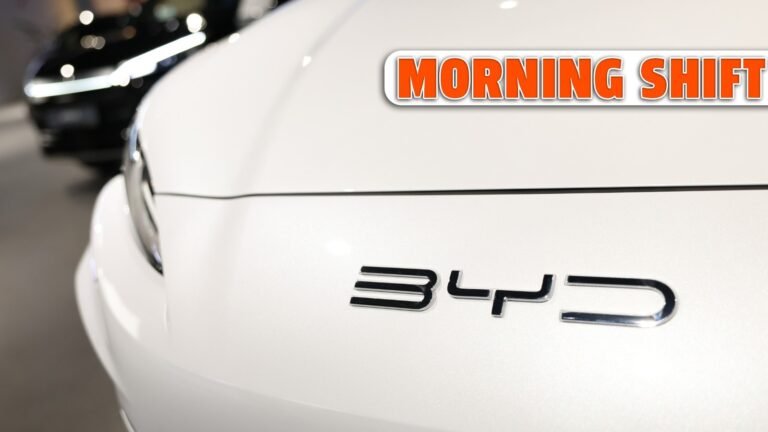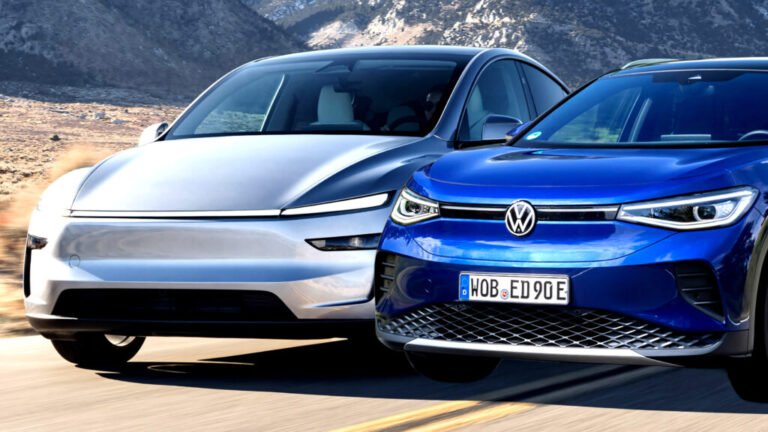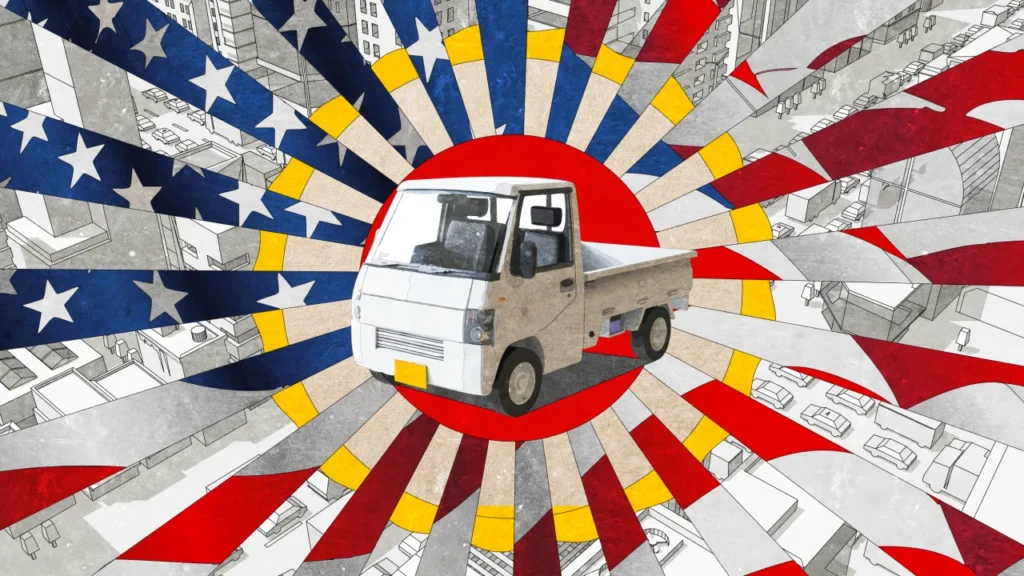
Diminutive and slow, with a charmingly outdated look, so-called Kei trucks are completely out of sync with the American truck and SUV market. In many states, in fact, they’re not allowed on highways or even public roads in general. Yet these distinctly oddball, humble, and un-macho vehicles—think of them as the anti-Cybertruck—are having a moment. U.S. sales of the idiosyncratic Japanese trucks, while severely constrained by regulatory and other factors, have reportedly tripled since 2018 to about 7,500 a year, drawing outsize attention (and social media love) precisely because they’re everything a “normal” truck isn’t.
Kei, which rhymes with “play,” is not a brand but a shortening of the Japanese term kei-jidōsha (“light vehicle”) for a regulatory vehicle class with specific size and engine restrictions. The mini trucks, vans, and cars are an established market niche in Japan, sold by auto brands including Honda, Toyota, and Nissan. Typically a Kei truck, with a small two-seat cab and flat cargo bed, is a little more than 11 feet long and less than 5 feet wide, running a three- or four-cylinder engine comparable to that of a motorcycle. By contrast, a Ford Super Duty F-250 King Ranch with a four-door crew cab is more than 20 feet long and 6½ feet wide—an example typical of broader trends toward bigger and more powerful trucks.

Among the many reasons for this supersizing is that it’s simply where consumer demand has led. But inevitably, as trucks have become more imposing—and arguably more similar—some consumers want something different. If the Cybertruck tried to meet that interest with a distinctly head-snapping sci-fi menace connoting Mad Max, Kei trucks offer the opposite. Frill-free and wee, they look inviting, adorable, and fun, less a mighty machine than a conversation-starting toy.
“There’s no machismo or hostility or toxicity within this community,” the founder of a Kei fan group recently told The New York Times. “We don’t go out and street race, because all of our cars are slow as hell.”

If the appeal is partly aesthetic, it also seems to be a response to a kind of functionality bloat in mainstream trucks, which are capable of carrying huge loads over onerous terrain—but in truth are seldom used to haul more than a few two-by-fours from a suburban Home Depot. A typical new truck runs well over $50,000; a Kei can cost less than $10,000 and can easily handle routine truck tasks. (A similar ethos animates low-frills two-door EV trucks from Jeff Bezos-backed startup Slate Auto, due next year.)
But that’s about as far as the logical case for a Kei goes. A key factor behind that retro look is that the Kei vehicles one is likely to see in America are actually quite old. The Kei trucks currently produced for the Japanese market don’t meet U.S. import safety and environmental performance standards; they can ship to the U.S. only as “antiques,” at least 25 years old. The steering wheel is on the right. Even fans admit that driving them in American-car traffic can be harrowing. Although Texas and Colorado have recently allowed the vehicles onto public roads, New York and California are among the many states that don’t.
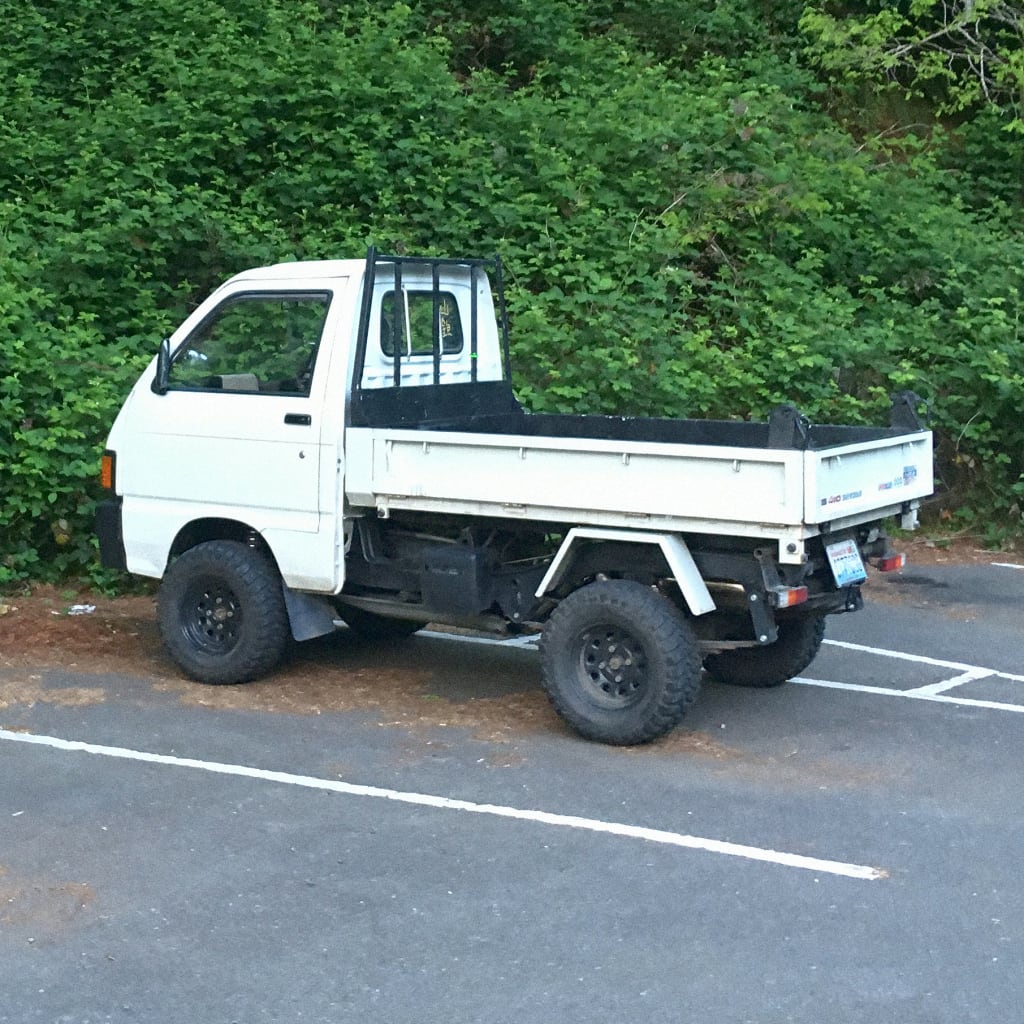
In other words, it takes a certain personality—motivated by more than practicality alone—to join the Kei nation. Actual owner demographic data is hard to come by, but it seems to owe less to factors like generational cohort than a kind of individual spirit: Consistent with generations of car-fanatic culture, owners of Keis frequently customize their vehicles and love to share anecdotes about curious looks and “What the heck is that?” inquiries. In a way, Kei vehicles are a rolling rebuke, or at least critique, of contemporary truck design. And after all, part of the fun of resisting traditional conspicuous consumption is with weird conspicuous consumption.
But of course the Kei-truck faithful can, and maybe prefer to, ground their fandom and their critiques in matters of function. For example, despite their modest footprint, most Kei trucks have a 6-foot bed—matching a typical Toyota Tacoma or Ford Ranger—a point made in pictures posted on a Kei Subreddit showing one of the toylike vehicles dwarfed by a Cybertruck, asking: “Guess which one has a longer bed?” For all the Cybertruck’s flashy angles and materials, the comical-looking Kei vehicle appeared to be the winner. And to the Kei enthusiast, making a point about form is a big part of the tiny truck’s function.




